9 Wildflowers That Are Irresistible to Butterflies
This post follows our research editorial guidelines.



Butterflies bring a touch of magic to any garden, creating perfect opportunities for stunning butterfly photos. To attract these delicate creatures and capture beautiful butterfly pictures, consider planting wildflowers that provide the nectar they crave. Here are nine wildflowers that will make your garden a butterfly haven and serve as perfect butterfly background settings for your photos.
1. Yarrow (Achillea millefolium)
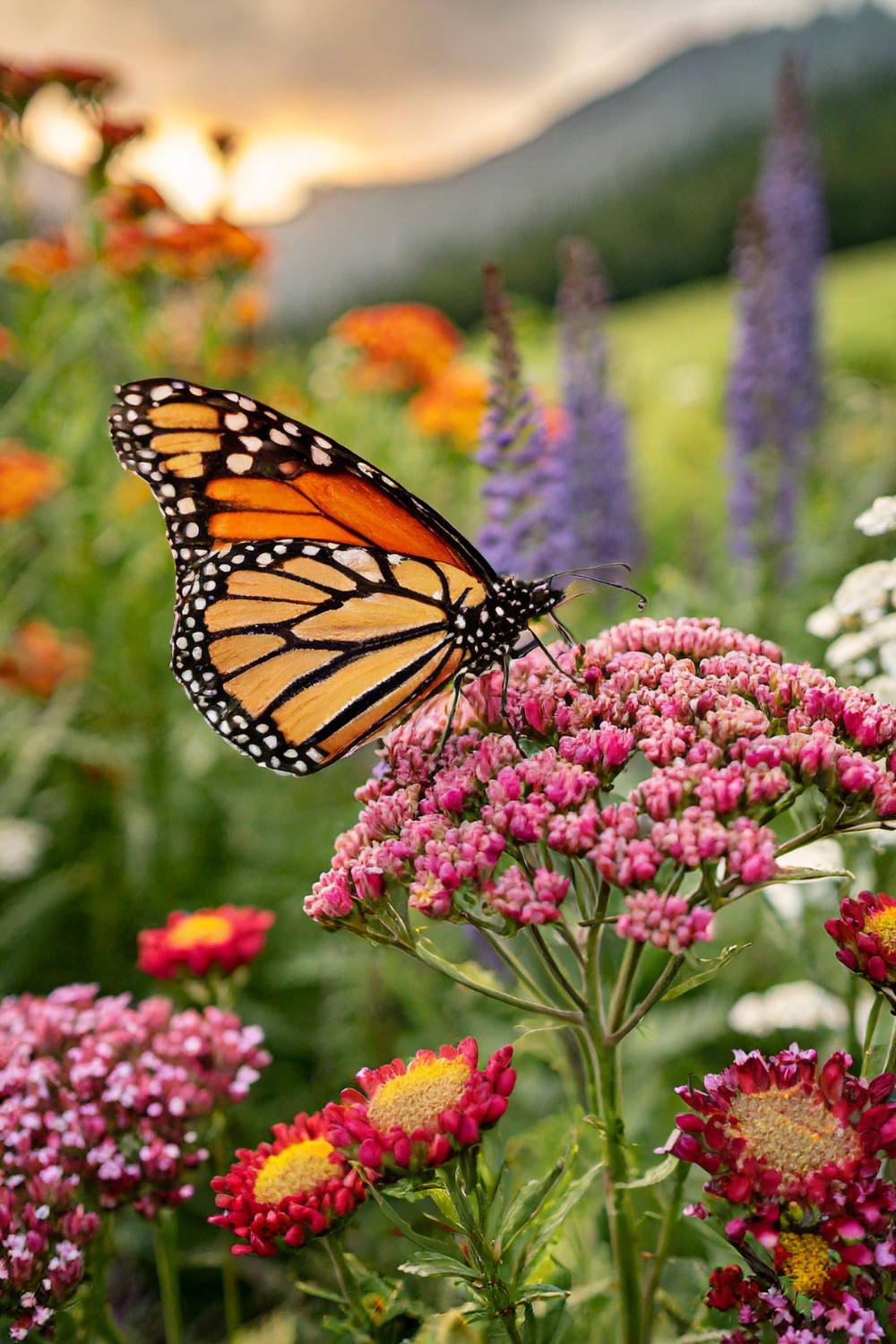
Yarrow is a medium-height plant, standing about 1 to 3 feet tall. Its flat-topped clusters of tiny flowers create perfect landing platforms for butterflies. This mildly aromatic plant blooms from late spring to early fall, offering a long feeding period and numerous chances to capture beautiful butterflies in your butterfly flowers shots.
| Scientific Name | USDA Grow Zone | Soil Preferences | Exposure Needs | Water Needs |
|---|---|---|---|---|
| Achillea millefolium | 3-9 | Well-drained, sandy or clay loam, pH 5.5-7.0 | Full sun | Low, drought-tolerant |
2. Blazing Star (Liatris pycnostachya)

With tall spikes that can reach 2 to 4 feet, the Blazing Star features dense, upright spikes of small purple flowers. Butterflies love the vertical arrangement, which makes feeding easy as they move upward. It has a mild fragrance and blooms from mid-summer to early fall, providing late-season nectar and fantastic butterfly on flower photo opportunities.
| Scientific Name | USDA Grow Zone | Soil Preferences | Exposure Needs | Water Needs |
|---|---|---|---|---|
| Liatris pycnostachya | 3-8 | Well-drained, sandy or clay loam, pH 5.8-7.2 | Full sun | Medium, prefers consistent moisture |
3. Butterfly Weed (Asclepias tuberosa)

Butterfly Weed stands about 1 to 2 feet tall and boasts clusters of bright orange flowers. Its tubular flowers are perfect for butterfly proboscises. Lightly scented, it blooms from late spring to summer, offering important early-season nectar. These striking flowers make a great butterfly background for capturing beautiful butterfly pictures.
| Scientific Name | USDA Grow Zone | Soil Preferences | Exposure Needs | Water Needs |
|---|---|---|---|---|
| Asclepias tuberosa | 3-9 | Well-drained, sandy soil, pH 6.0-7.0 | Full sun | Low, drought-tolerant |
4. Mexican Sunflower (Tithonia rotundifolia)

The Mexican Sunflower is a standout with large, bright orange daisy-like flowers on tall stems, usually 3 to 6 feet tall. Butterflies are drawn to its open flower structure, which provides easy access to nectar. This mild fragrance plant blooms from mid-summer to frost, extending the feeding season and ensuring plenty of butterfly photos for your collection.
| Scientific Name | USDA Grow Zone | Soil Preferences | Exposure Needs | Water Needs |
|---|---|---|---|---|
| Tithonia rotundifolia | 2-11 | Well-drained, sandy or loamy soil, pH 6.0-7.5 | Full sun | Medium, prefers regular watering |
5. Verbena (Verbena bonariensis)
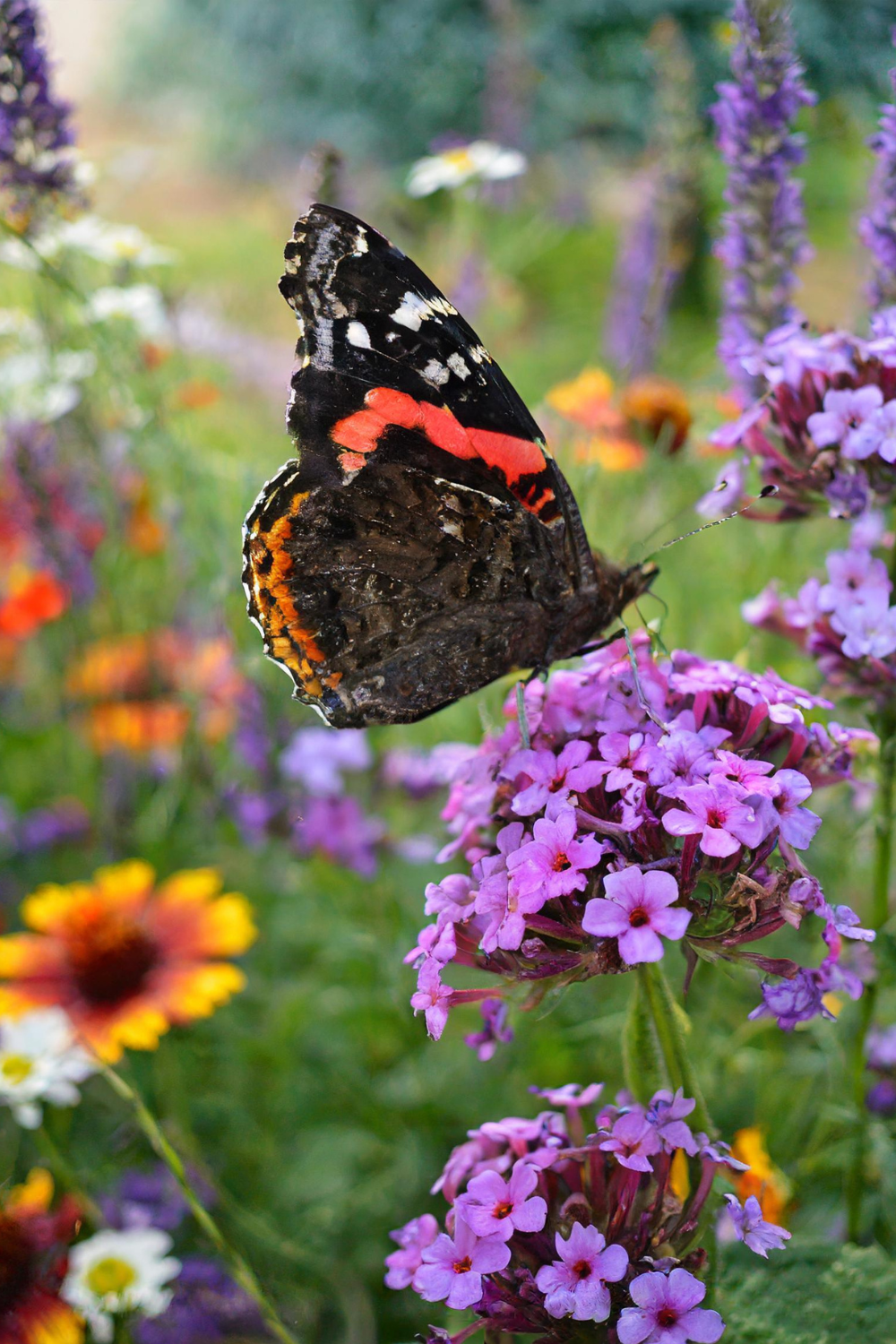
Verbena grows tall and airy, reaching around 3 to 6 feet. Its small clusters of tiny purple flowers sit atop slender stems, making it easy for butterflies to land and feed. Lightly scented, it blooms from mid-summer to frost, offering a long-lasting nectar source. The tall stems and small flowers make for exquisite butterfly flowers photos.
| Scientific Name | USDA Grow Zone | Soil Preferences | Exposure Needs | Water Needs |
|---|---|---|---|---|
| Verbena bonariensis | 7-11 | Well-drained, loamy soil, pH 5.8-7.5 | Full sun | Medium, prefers consistent moisture |
6. Milkweed (Asclepias spp.)

Milkweed varies in height from 2 to 5 feet depending on the species. Its umbrella-like clusters of small flowers provide ample landing space and easy access to nectar. With a sweet, strong fragrance, Milkweed blooms from late spring to summer, playing a crucial role in the lifecycle of monarch butterflies. Capture these moments in beautiful butterflies pictures against the flowers nature backdrop.
| Scientific Name | USDA Grow Zone | Soil Preferences | Exposure Needs | Water Needs |
|---|---|---|---|---|
| Asclepias spp. | 3-9 | Well-drained, sandy or clay loam, pH 4.8-7.2 | Full sun | Medium, prefers consistent moisture |
7. Coneflower (Echinacea purpurea)
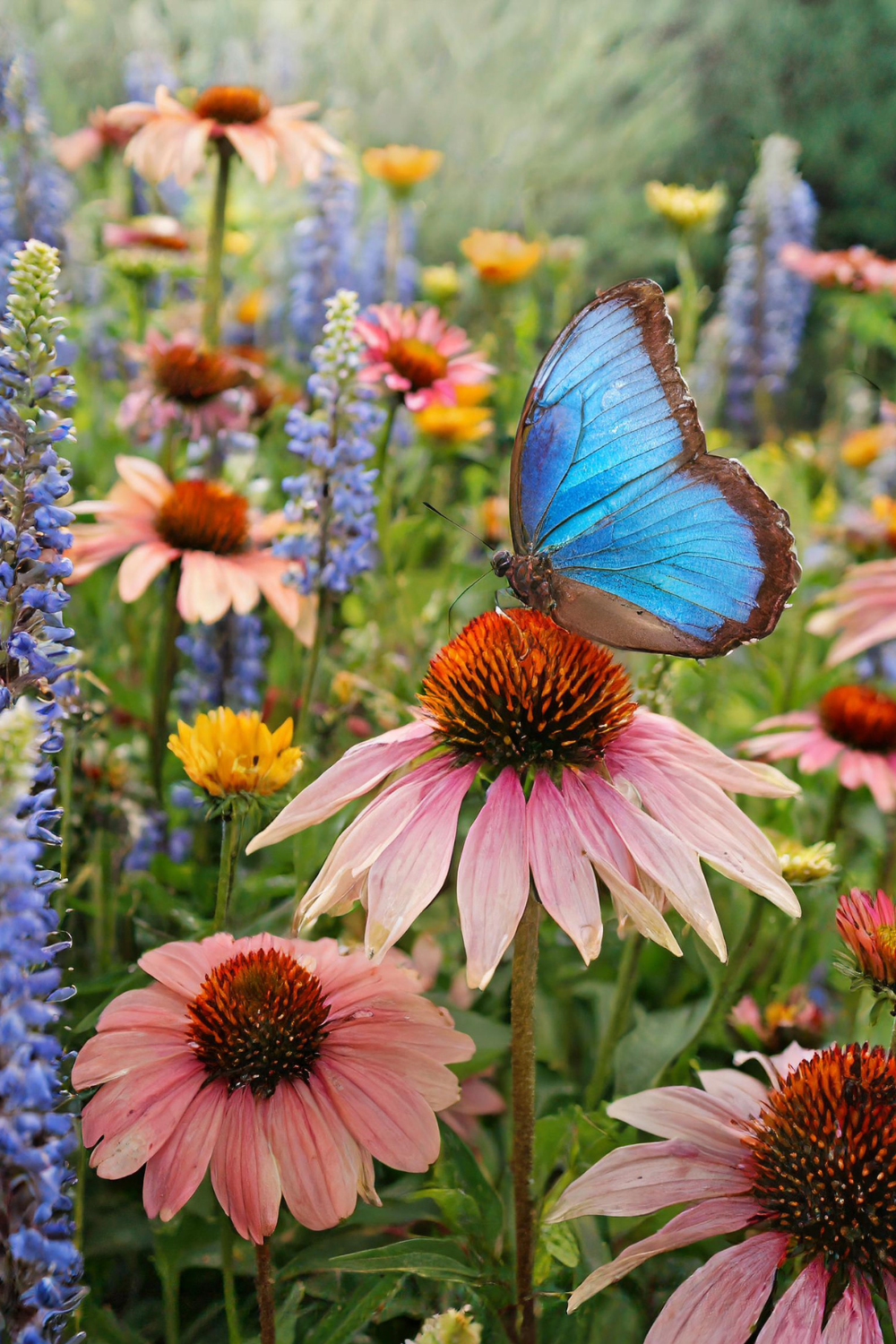
Coneflower, typically 2 to 4 feet tall, features large, daisy-like flowers with a prominent central cone. Its wide, flat petals make it easy for butterflies to land and feed. Lightly fragrant, it blooms from mid-summer to early fall, offering a prolonged nectar source and creating stunning scenes for butterfly on flower photos.
| Scientific Name | USDA Grow Zone | Soil Preferences | Exposure Needs | Water Needs |
|---|---|---|---|---|
| Echinacea purpurea | 3-8 | Well-drained, sandy or loamy soil, pH 6.0-7.0 | Full sun to partial shade | Medium, drought-tolerant once established |
8. Black-eyed Susan (Rudbeckia hirta)
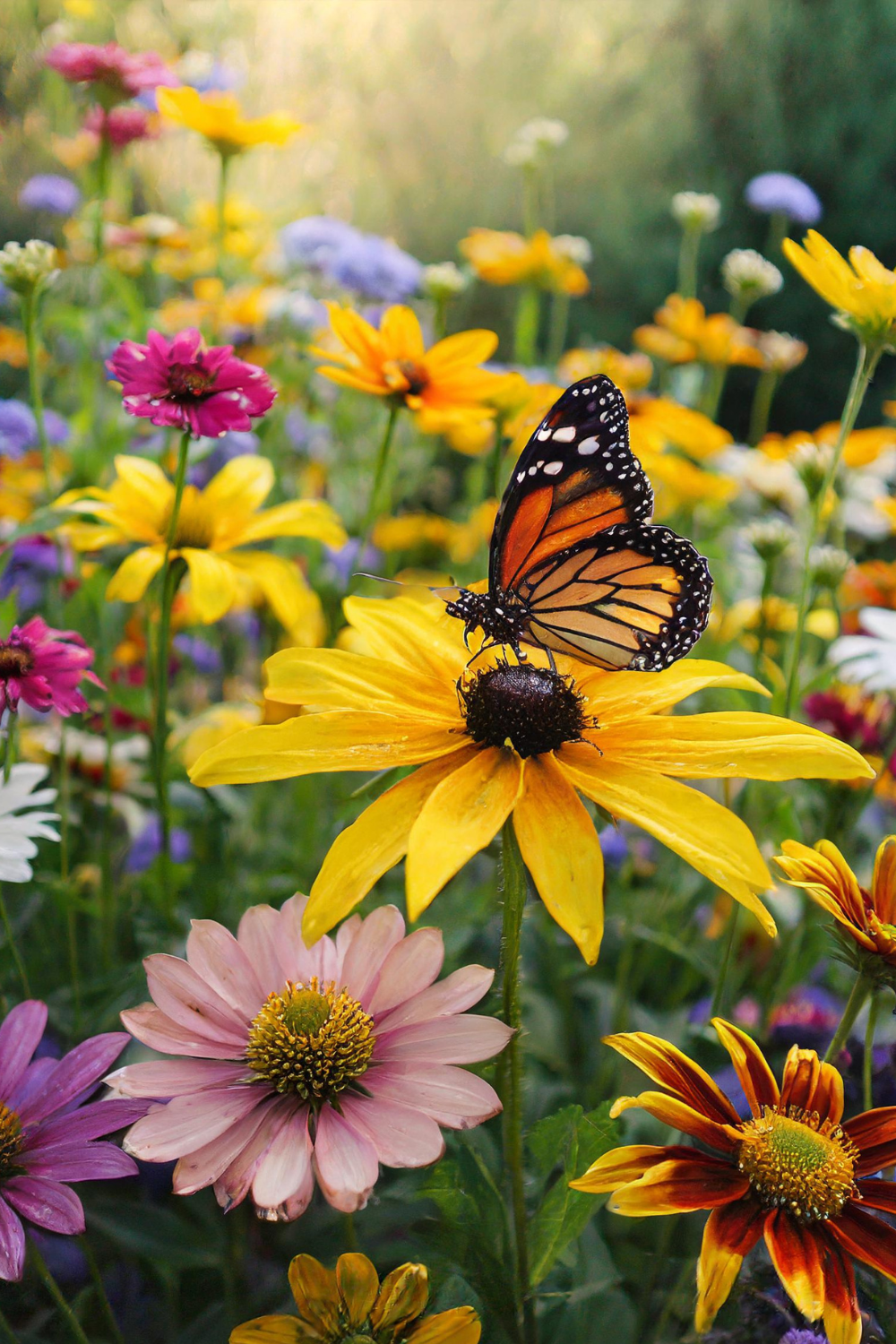
This medium-height plant, around 1 to 3 feet tall, has bright yellow, daisy-like flowers with a dark central cone. The large, open flowers are easy for butterflies to access. With a mild fragrance, it blooms from summer to early fall, providing a long feeding period and endless opportunities for capturing butterfly pictures.
| Scientific Name | USDA Grow Zone | Soil Preferences | Exposure Needs | Water Needs |
|---|---|---|---|---|
| Rudbeckia hirta | 3-9 | Well-drained, loamy soil, pH 6.8-7.5 | Full sun | Medium, prefers regular watering |
9. Aster (Symphyotrichum spp.)

Asters vary in height, generally from 1 to 4 feet. Their small, star-shaped flowers in clusters provide numerous feeding spots. Mildly aromatic, they bloom from late summer to fall, crucial for late-season butterflies. Capture these delightful moments in beautiful butterfly pictures with Asters as your flowers nature setting.
| Scientific Name | USDA Grow Zone | Soil Preferences | Exposure Needs | Water Needs |
|---|---|---|---|---|
| Symphyotrichum spp. | 3-8 | Well-drained, sandy or loamy soil, pH 5.5-7.5 | Full sun to partial shade | Medium, prefers consistent moisture |
Creating a Butterfly Paradise Using Flowers In Nature
By planting these wildflowers, you can create a vibrant, butterfly-friendly garden that provides essential nectar throughout the growing season. Each of these plants offers unique benefits and will help ensure your garden is alive with the flutter of butterfly wings from spring through fall. So, why not start planting and enjoy the natural beauty and ecological benefits these wildflowers bring, while also filling your camera with stunning butterfly
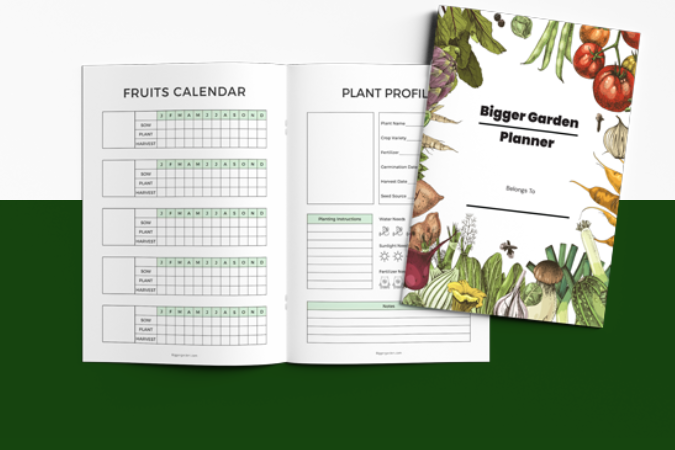

Before you go!
Transform Your Garden with Giant Alliums: Planting Tips for Towering Blooms
12 Pollinator Flowers to Attract Honey Bees to Your Garden
Growing Chocolate Cosmos: A Sweet Journey in Your Garden
12 Tall Perennials With The Best Pink Flowers in Bloom